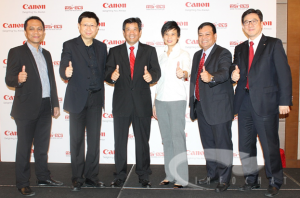Mobile device management (MDM) has become a crucial discipline for IT departments, given the increasing number of smartphones and media tablets used within organizations, according to Gartner, Inc.
“The era of fully supporting company-owned devices is giving way to an era of managed diversity in which tiered support for employee-owned, consumer-class devices is the norm,” said Terrence Cosgrove, research director at Gartner. “With the unabated growth of consumerization, IT leaders need to implement MDM to manage corporate- and employee-owned devices, and assign responsibilities inside IT departments for the service, application and security of all these devices.”
MDM requires tight coordination between security and operations. The measures organizations take to implement mobile device security are mostly about ensuring that device configurations match corporate policy — for example, they check whether devices are protected by a compliant password and that the information they contain can be wiped, should circumstances call for this.
“Because of the complexity of the mobile device landscape, there must be a person or group responsible for monitoring this landscape and for understanding users’ demands for new types of device and the impact that new platforms have on applications,” said Mr. Cosgrove. “This person or group must work with the security team regularly to address the impact that platform changes and demands for mobile services have on the organization’s security.”
Organizations are moving from a single-standard approach to controlling mobility to a more flexible approach that Gartner calls “managed diversity” — one that supports the variety of mobile devices found in the organization. “This is the only approach that helps IT leaders maintain control over mobility, and supports bring-your-own-device programs,” said Mr. Cosgrove. The key to this strategy is to provide an appliance service that offers support for both personally owned devices (individually liable) and business-specific devices (corporate-liable).
Gartner analysts added that without managed diversity, organizations are likely to face increased costs, for three reasons: reduced user productivity, if the IT standard does not suit users’ needs; a perception on the part of users that the IT department has lost relevance, which prompts more users to support themselves and increases indirect costs; higher noncompliance costs incurred by users who circumvent IT standards.
Although some MDM vendors and products have been around a long time, MDM is a nascent market and growing rapidly. Today, there are over 100 MDM vendors, with most offering on-premises or software-as-a-service tools. More mature managed services will emerge during the next three years to drive growth in the industry. Gartner predicts that pure MDM revenue (i.e., excluding revenue relating to messaging and security) will exceed $500 million in 2012.
Organizations have to decide whether a heavyweight (i.e., container-based) or lightweight (i.e., policy-based) approach is appropriate for them. “A variety of factors come into play here, including device ownership (whether the user or the organization owns the device), security, compliance, application delivery and device usability,” said Mr. Cosgrove.






